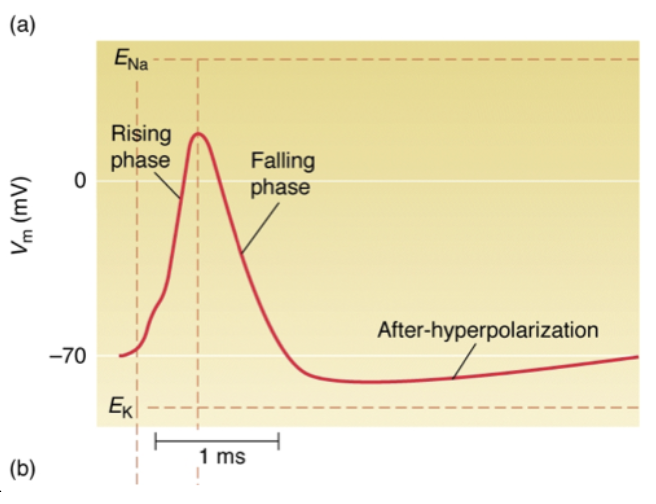8. Electrical properties of excitable cells: Capacitance & Conductance Part 2: Conductance
1/13
Earn XP
Description and Tags
Lecture 8
Name | Mastery | Learn | Test | Matching | Spaced |
|---|
No study sessions yet.
14 Terms
Why is the cell membrane called a leaky capacitor?
Membrane = capacitor (stores charge)
Ion channels allow current through membrane → “leak”
Current measured in picoamperes (pA) = 1 picocoulomb per second
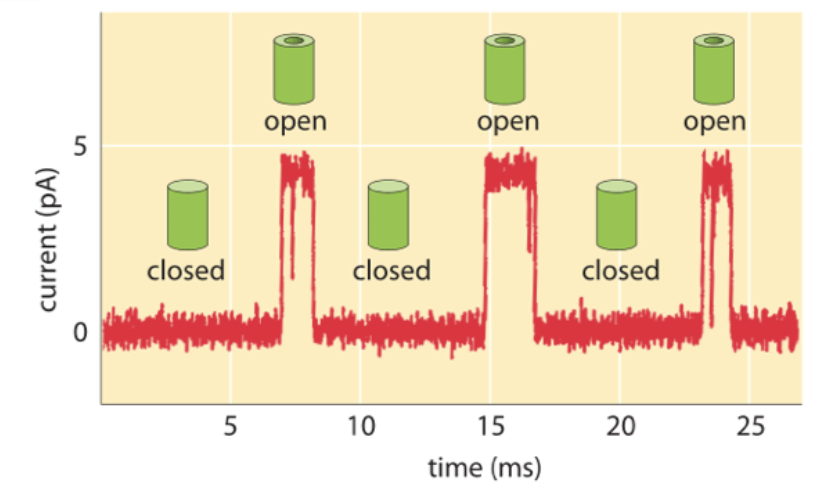
How do ion channels affect membrane conductance?
Channels allow specific ions to pass → act as conductors
Ion channels have resistance (more than ECF/ICF) → can act as resistors
For neuron activity, important to consider resistance of intracellular environment
Ionic conductance depends on number of open channels
Together with capacitance → determines electrical activity
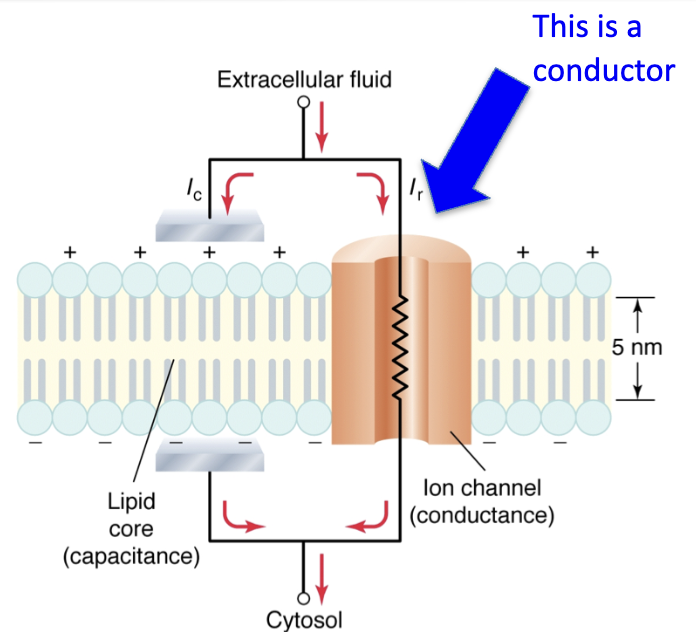
How is current through a single K+ channel determined?
Lipid bilayer separates charge → capacitance (Cm)
Current depends on electrical potential difference across membrane (Vm − Eion)
Conductance: ability of channel to pass current
γion (single channel), gion (all channels of that type)
Measured in siemens (S); inversely proportional to resistance (R), measured in Ohms
γion = 1 / R
Closed channel conductance = 0
When resistance ↑ = conductance ↓
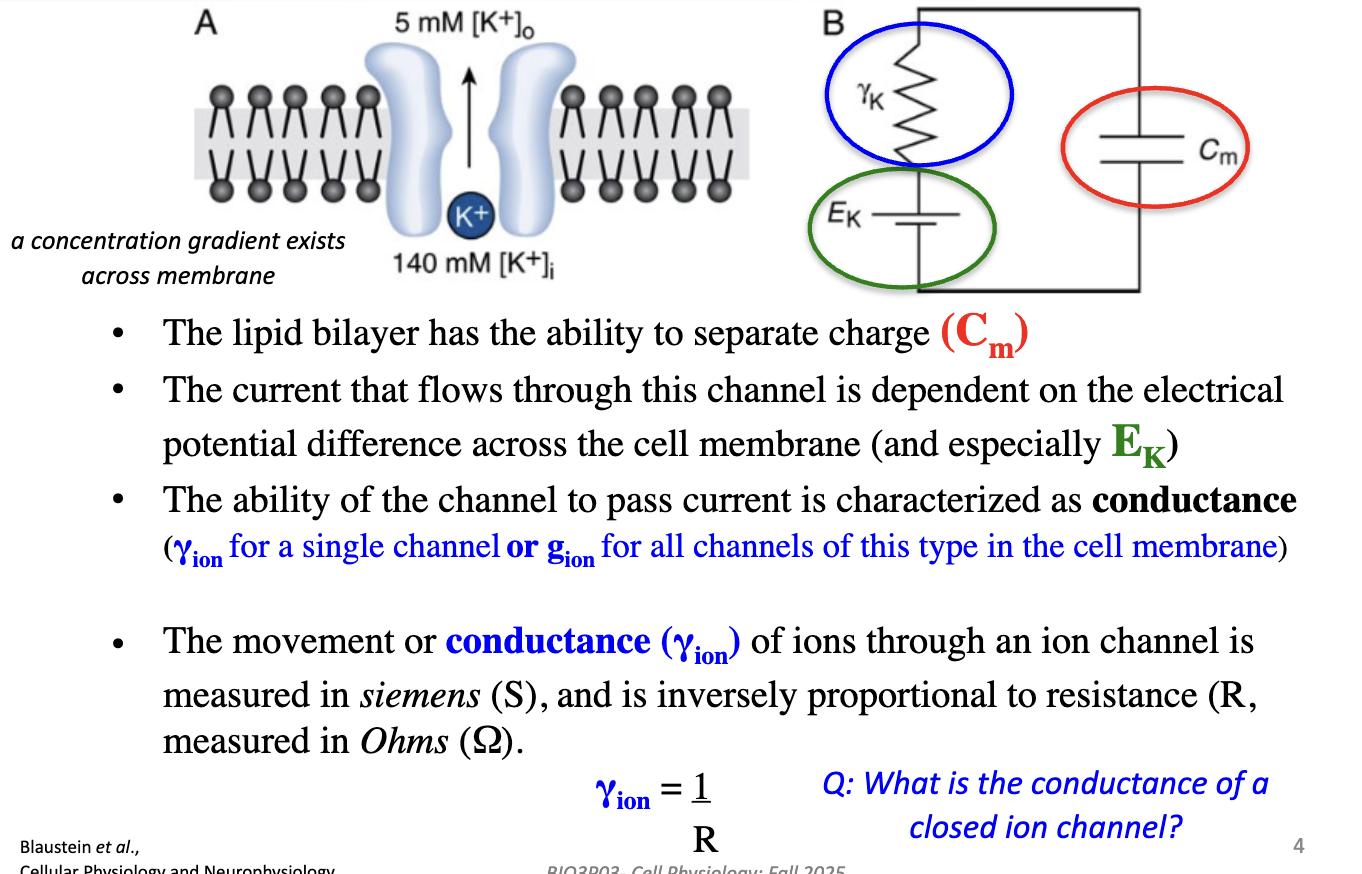
How does Ohm’s Law apply to ion channels in cells?
Ohm’s Law: I = V / R
In circuits: voltage source → resistor → current of electrons.
In cells: current = flow of ions, not electrons.
Conductance (gion) = 1 / R
Rewritten for ions:
I = gion ×V
⚠ Note: For ion channels, “V” isn’t just the battery voltage — it’s the driving force (membrane potential relative to the ion’s equilibrium potential).
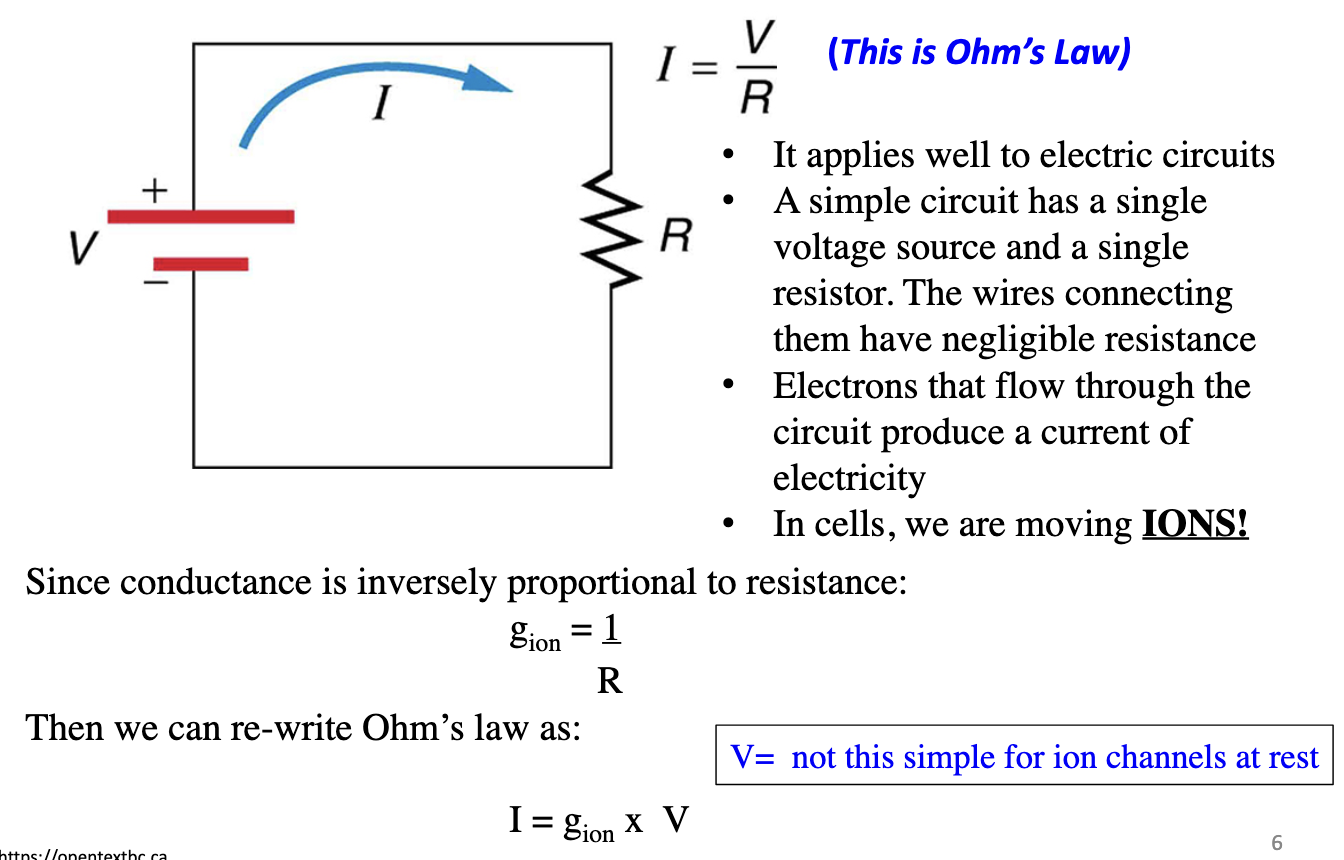
Why is Ohm’s Law modified for ion channels?
Current: Iion = gion × (Vm − Eion) → includes driving force
Depends on conductance (g) and driving force (Vm − Eion)
If Vm = Eion → no net movement (iion = 0)
Resting Vm≠ Eion → driving force influences conductance of channel
Ions flow to move Vm toward their Eion
Example: Vm = −68 mV → K+ efflux occurs when channels open because Ek=-81 mV
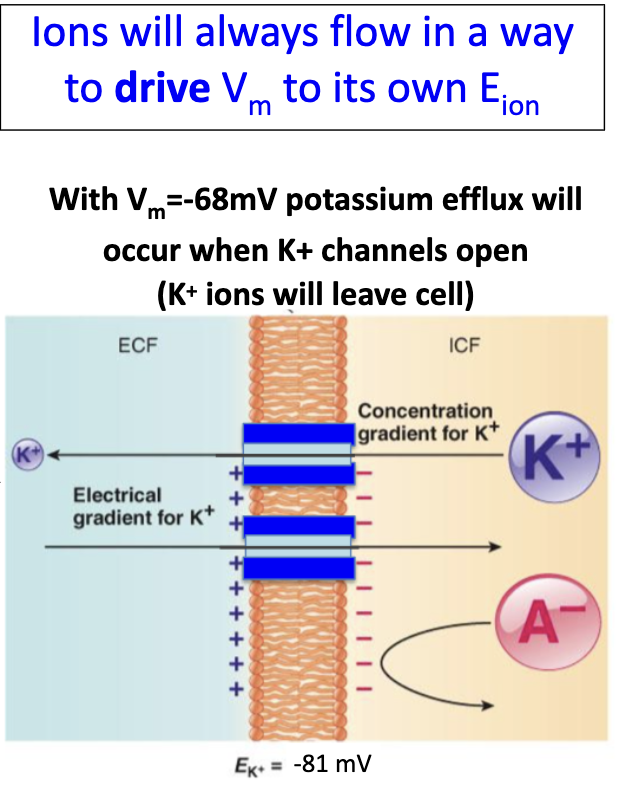
How do we calculate ion-specific currents?
Ik = gk(Vm − Ek)
INa = gNa(Vm − ENa)
ICl = gCl(Vm − ECl)
Each ion has its own conductance and driving force
How do we determine driving force and direction of ion movement in non-excitable cell?
Driving force = Vm − Eion
Example cell: Vm = −75 mV
Na+: −75 − 65 = −140 mV → Na+ moves in
K+: −75 − (−109) = 34 mV → K+ moves out
Larger absolute value → greater driving force
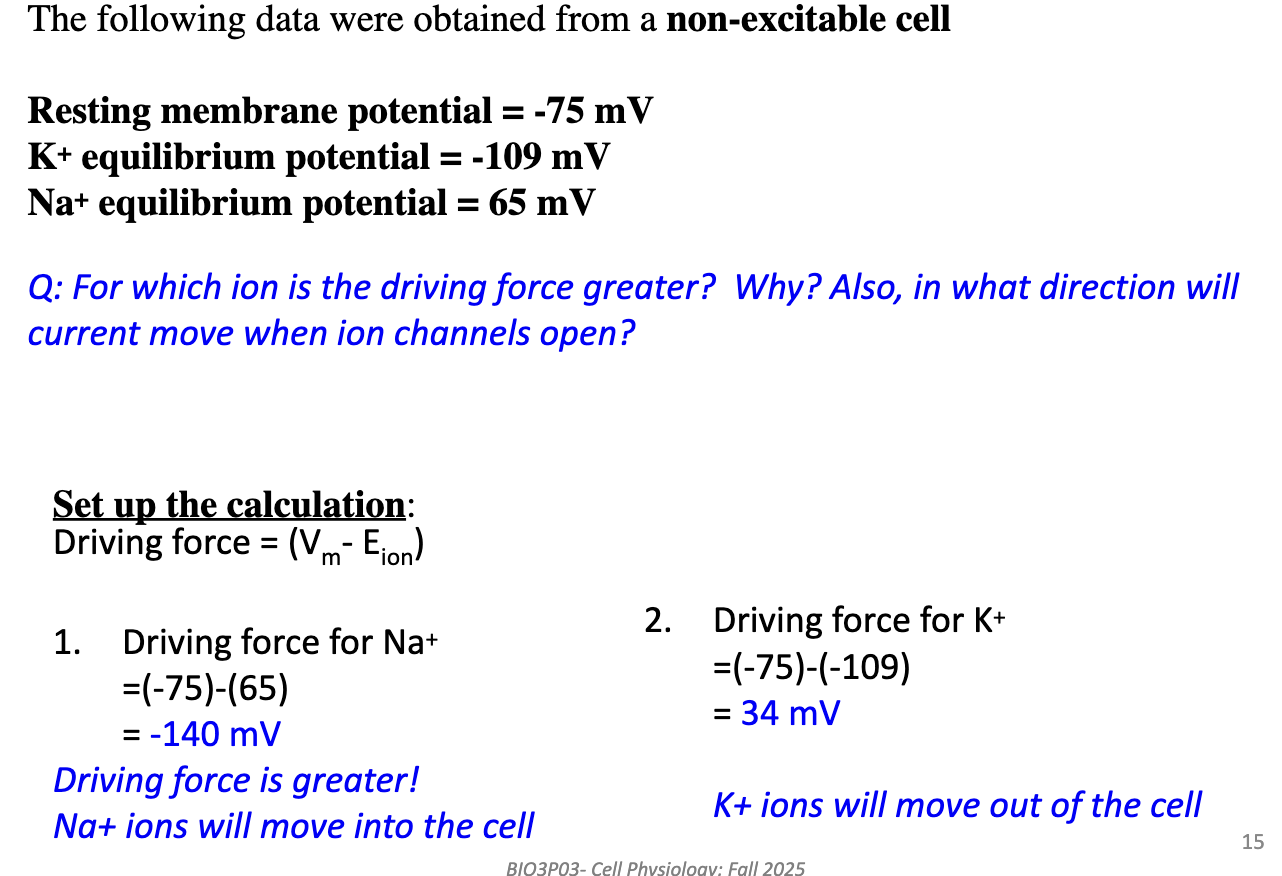
What happens to passive and active currents at steady-state (excitable cell)?
Circuit includes conductance through passive Na+, K+, Cl− pathways and active transport (sodium-potassium pump)
At steady-state: sum of all active & passive ionic currents = 0
Passive and active currents balance each other
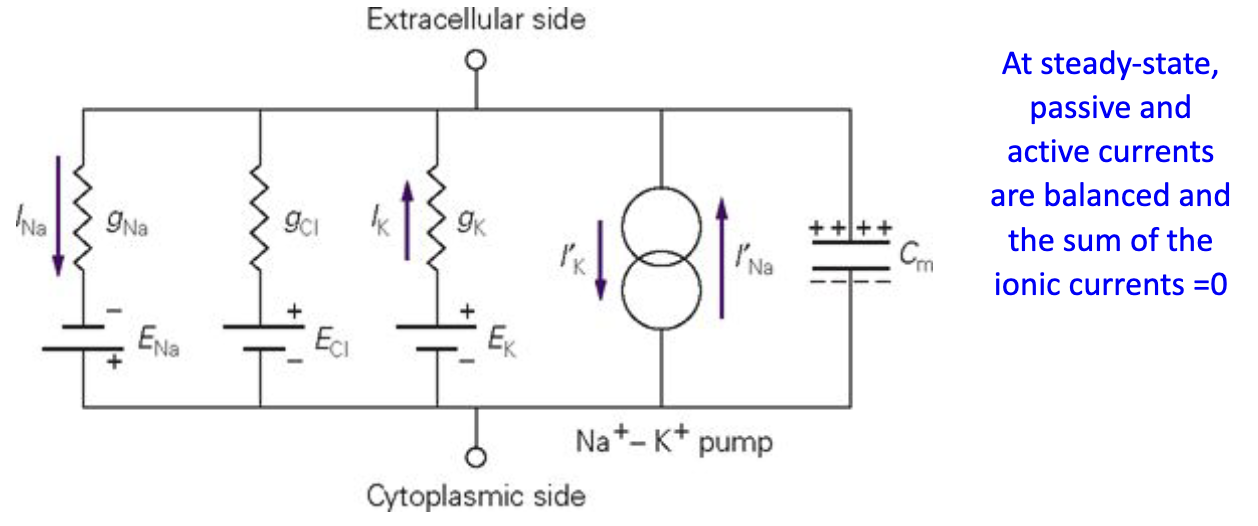
How does a negative driving force affect ion movement in excitable cell?
Vm − Eion < 0 → positive ion moves into cell
Example: Vm = −68 mV, ENa = 58 mV
Vm − Eion = (-68) - (58)
Driving force = −126 mV → Na+ moves in to depolarize cell
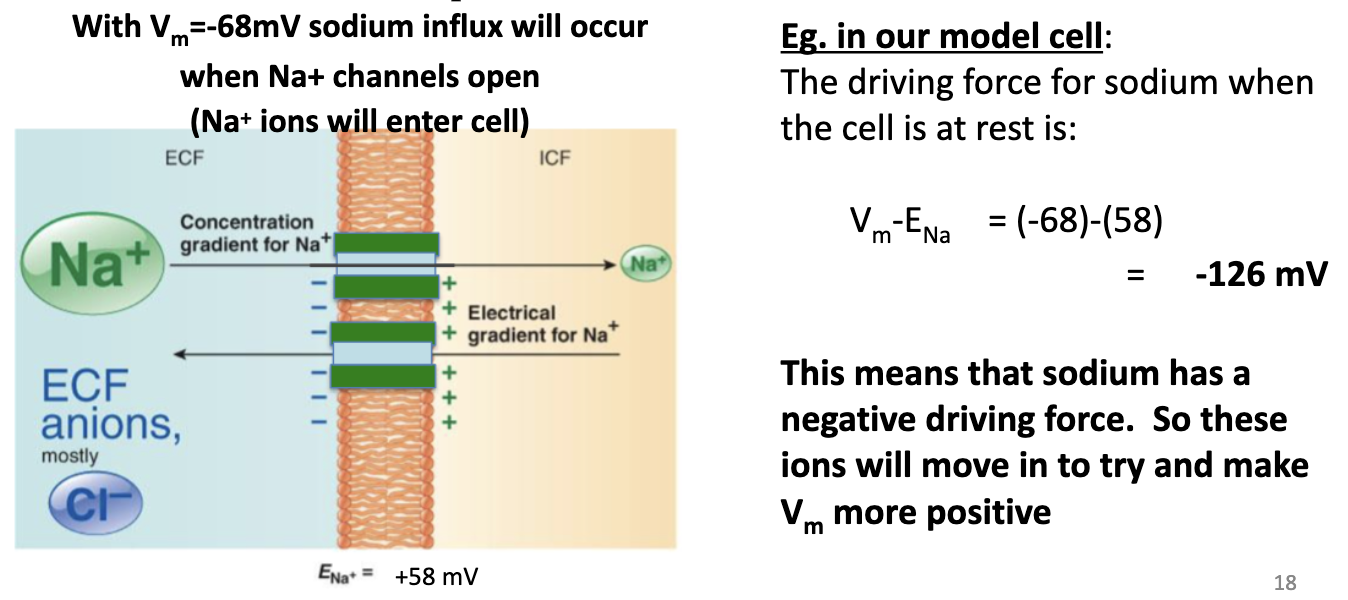
How does a positive driving force affect ion movement?
Vm − Eion > 0 → positive ion moves out of cell
Example: Vm = −68 mV, EK = −81 mV
Vm − Eion = (-68) - (-81)
Driving force = +13 mV → K+ moves out to hyperpolarize cell
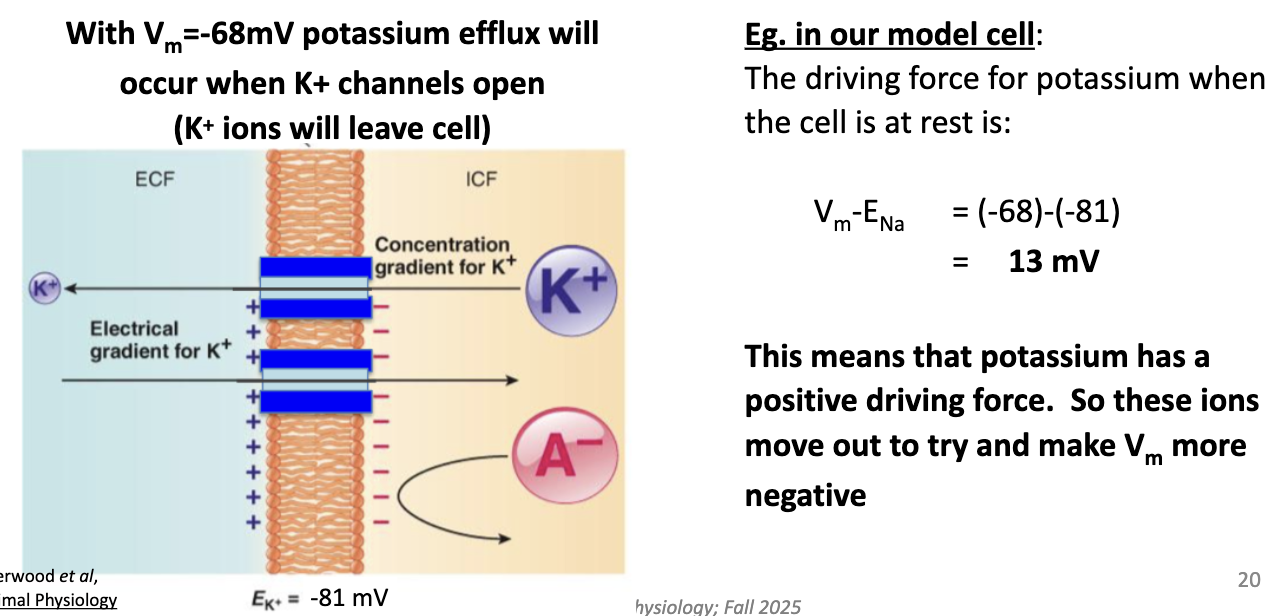
How can we determine which ions flow through an ion channel?
Use patch clamp technique
Ex: Cell attached patch clamp
Experimentally induce depolarizing voltage step and measure current through single channel → determine ion specificity
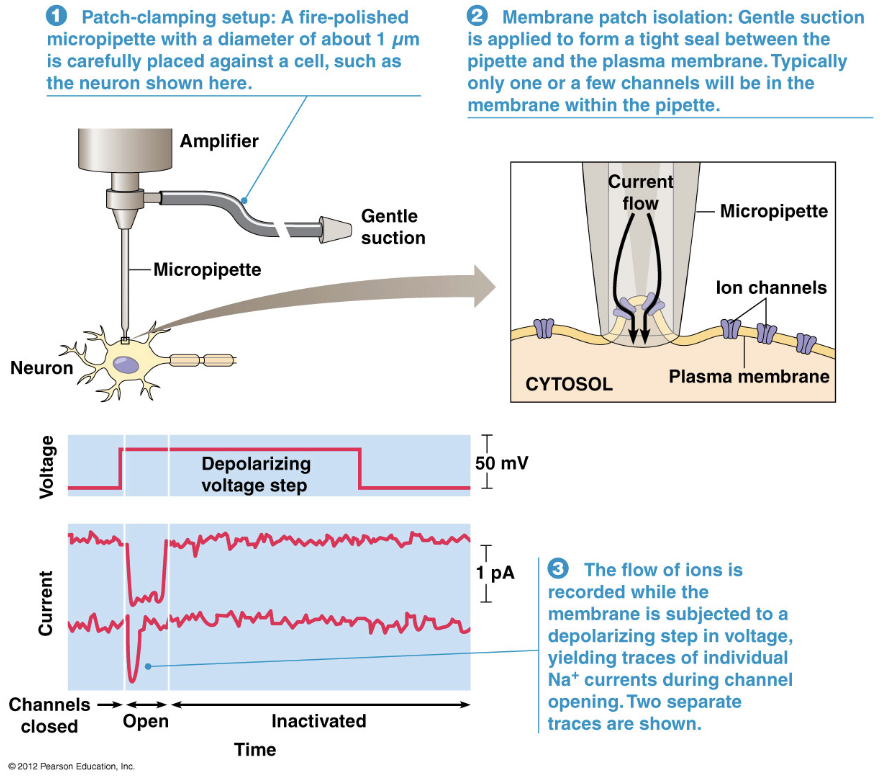
What does an I-V (current-voltage) plot tell us about an ion channel?
I-V plot shows how current through a channel changes with membrane voltage.
Linear relationship: Channel behaves like an Ohmic conductor → current is proportional to voltage.
Slope of I-V plot: Gives channel conductance (how easily ions pass).
No current at specific voltage (e.g., 58 mV): Membrane voltage equals the ion’s equilibrium potential (ENa).
At this voltage, driving force = 0, so no net ion flow.
Insight: Identifies which ion the channel is permeable to (here, Na⁺).
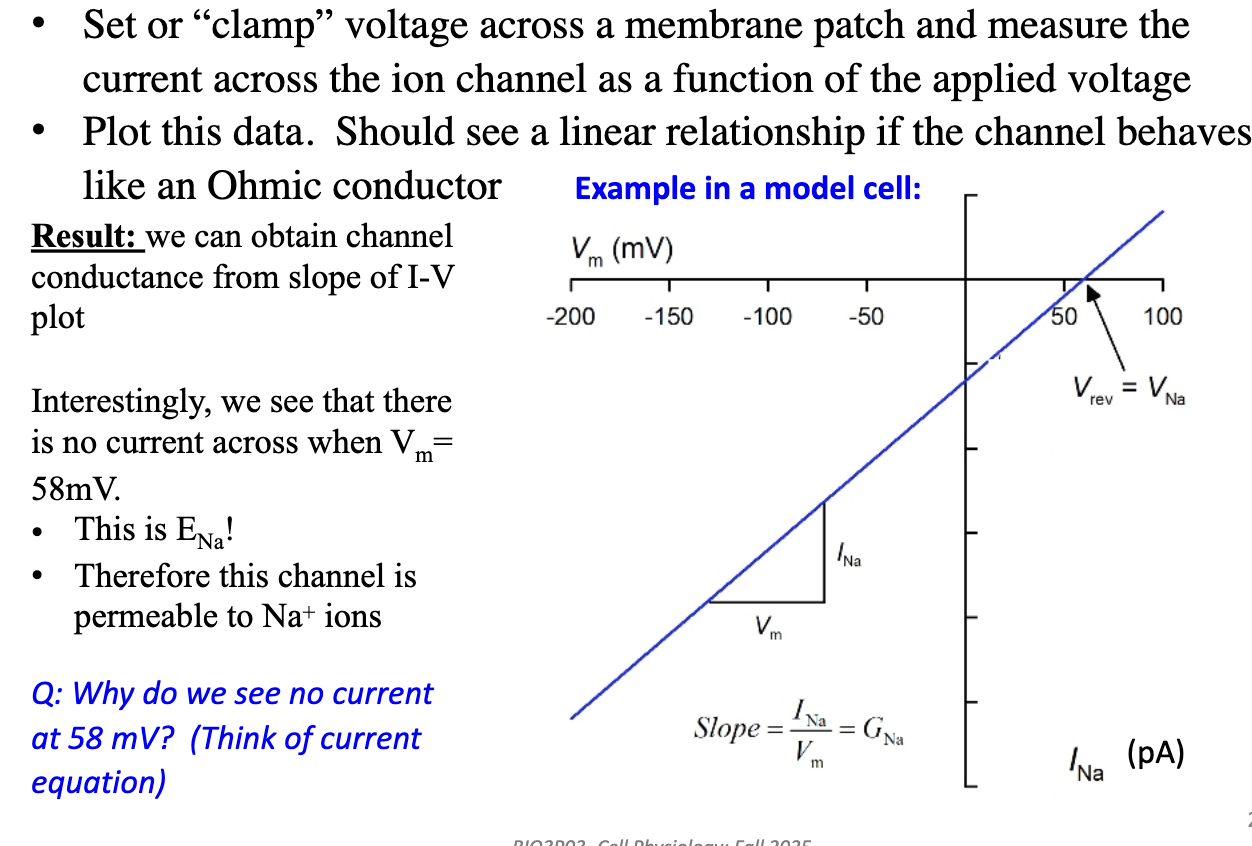
What does a single-channel I-V plot tell us about ion flow and membrane potential?
The reversal potential (Eion or ER) is the voltage where no net current flows through the channel.
Activating a channel that is selective for a specific ion moves the membrane potential (Vm) toward Eion.
As Vm approaches Eion, the driving force decreases → less current.
If Vm = Eion → no current
If Vm is on the other side of Eion → current reverses direction.
I-V plots can be:
Linear (Ohmic) → channel passes current equally in both directions
Rectifying → channel passes current more easily in one direction than other
How do electrical signals arise when ion channels open?
Membrane potential changes during action potential
Caused by transient changes in ion conductances:
Rapid, brief Na+ influx
Slow, prolonged K+ efflux
